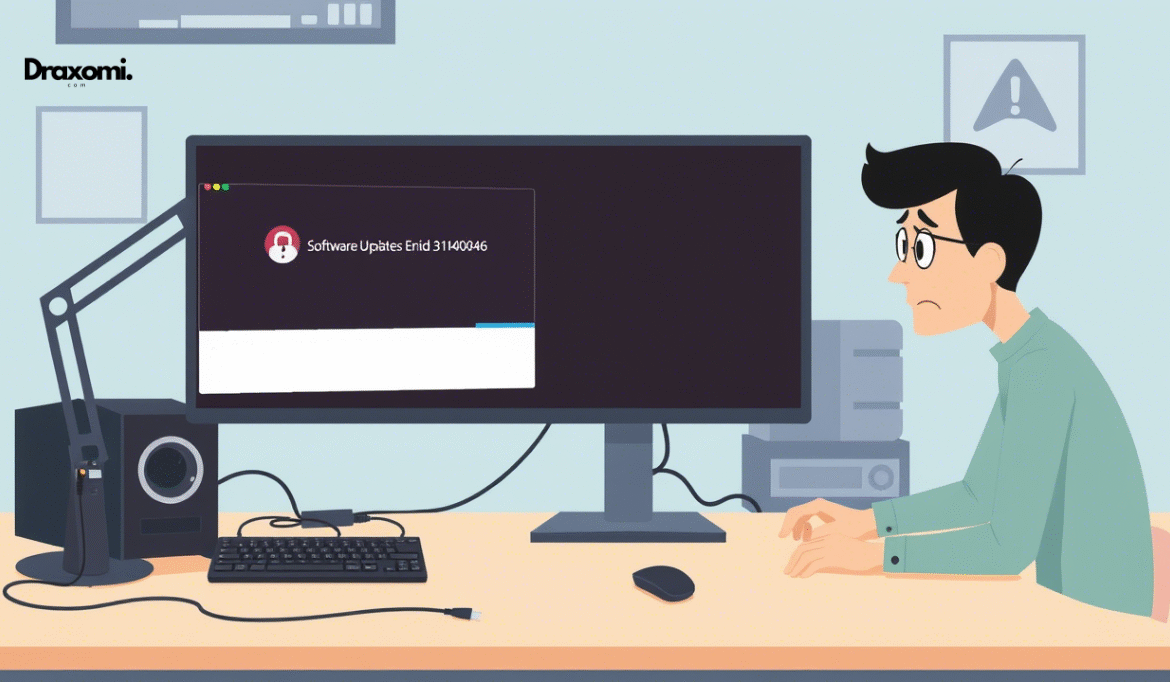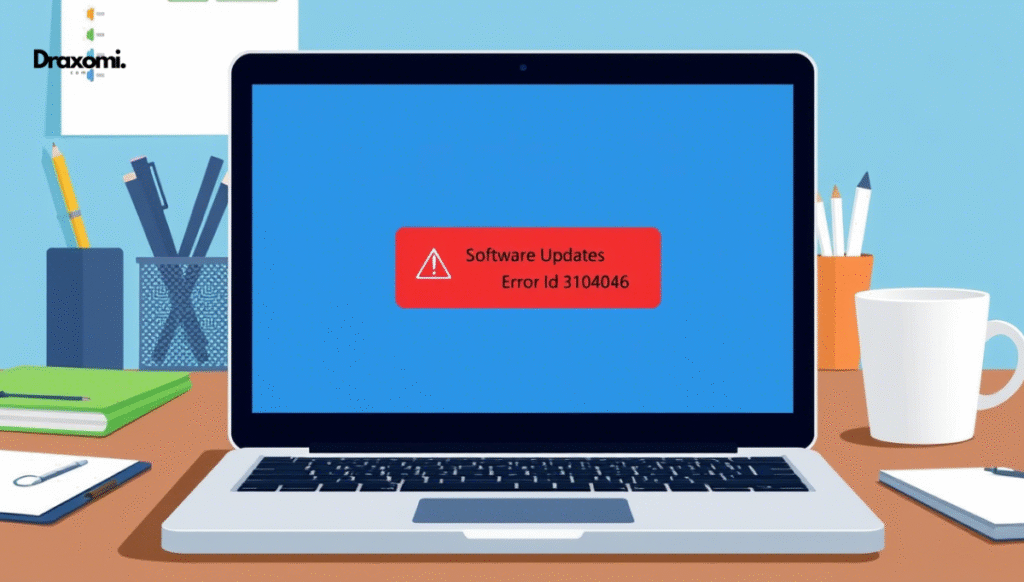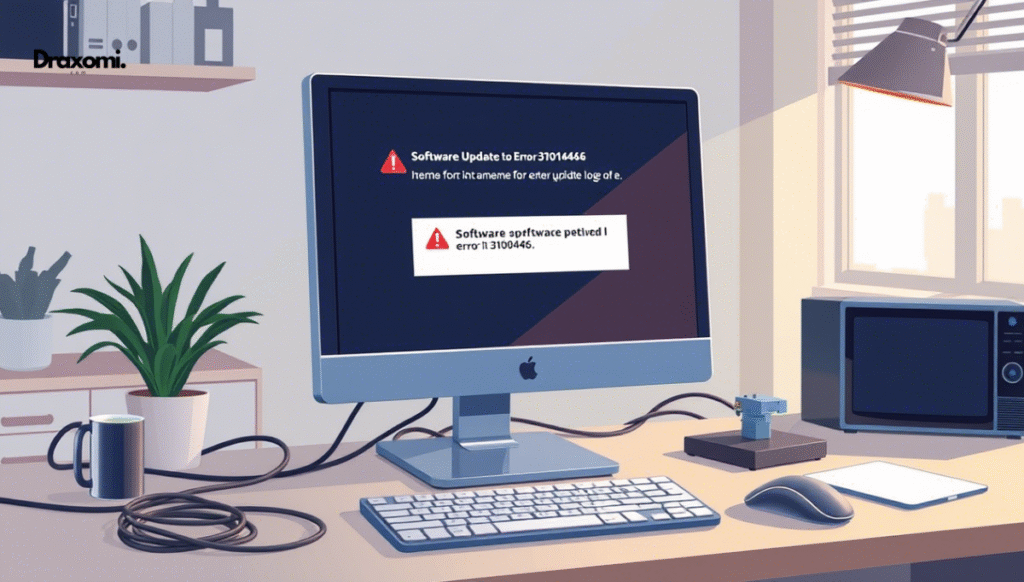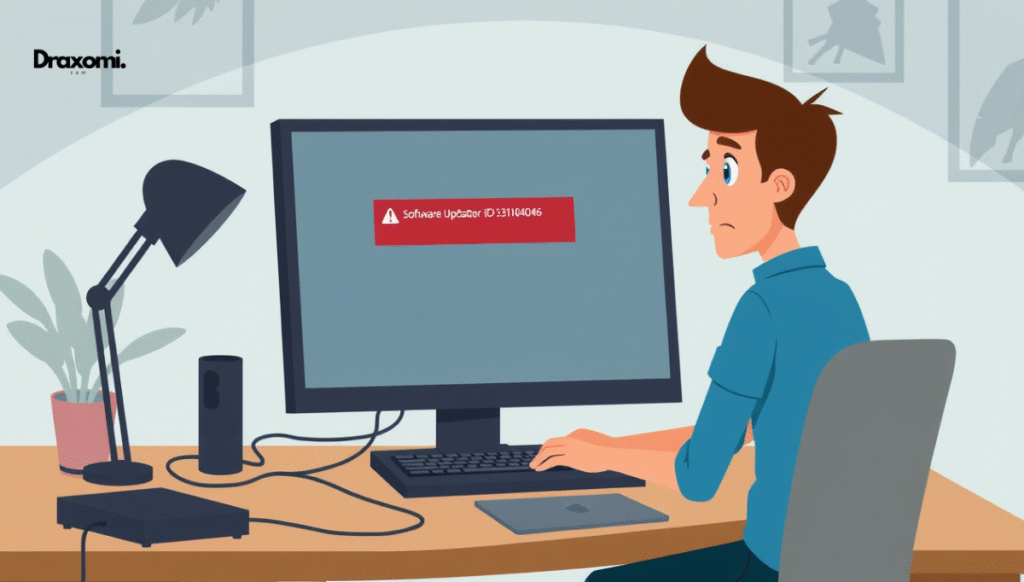
How to Fix Software Updates Error ID 3104046
Software Updates Error ID 3104046
If you’re a Windows user, especially someone managing systems or using enterprise-level devices, you might have come across Software Updates Error ID 3104046 while trying to install updates through Windows Update or Microsoft Endpoint Configuration Manager (formerly SCCM). This error typically occurs during the deployment of software updates and can prevent your system from receiving critical security patches or feature enhancements.
The error message may appear as something like:
“Installation failed with error code 3104046 (0x2F5D5E)”
This hexadecimal number corresponds to an internal failure in the update installation process, often tied to configuration issues, corrupted files, or miscommunication between system components. While it’s not always easy to pinpoint the exact cause immediately, understanding the possible triggers is the first step toward resolving this frustrating issue.
Common Causes Behind Software Updates Error ID 3104046
Before jumping into solutions, it’s important to understand what might be causing Error ID 3104046 on your system. Identifying the root cause can help streamline troubleshooting and reduce unnecessary steps. Here are some of the most common reasons behind this error:
- Corrupted System Files : The Windows operating system relies heavily on system files for smooth operations. If any of these files become damaged or missing, errors like 3104046 may occur.
- Issues with Windows Update Components : The Windows Update service includes several background components such as the Background Intelligent Transfer Service (BITS), Windows Update Agent, and Cryptographic services. If any of these fail or get corrupted, updates will not install properly.
- Insufficient Disk Space : Running low on disk space can hinder the download and installation of updates, triggering errors.
- Outdated Drivers or BIOS : Sometimes hardware-related components like outdated drivers or BIOS versions interfere with the update process.
- Group Policy Misconfigurations : In enterprise environments, Group Policies control how updates are deployed. If policies are incorrectly configured, they can lead to errors like 3104046.
- Malware or Third-party Antivirus Interference : Some third-party antivirus programs or malware infections can block or disrupt the update process.

Step-by-Step Solutions to Fix Software Updates Error ID 3104046
Now that we’ve explored the possible causes, let’s move on to the practical fixes. These methods are tried and tested by IT professionals and system administrators who deal with Error ID 3104046 regularly.
1. Run the Windows Update Troubleshooter
Windows comes equipped with built-in troubleshooters designed to automatically detect and fix common issues related to system functions — including updates.
To run the Windows Update Troubleshooter:
- Go to Settings > Update & Security > Troubleshoot .
- Scroll down and click on Windows Update .
- Click Run the troubleshooter .
- Follow the on-screen instructions to allow the tool to scan and repair any issues it finds.
This method often resolves minor glitches that could be contributing to the Software Updates Error ID 3104046 .
2. Restart the Windows Update Services
Sometimes, simply restarting the relevant services can clear up the issue. Here’s how to do it:
- Press
Win + R, typeservices.msc, and press Enter. - Locate the following services:
- Windows Update
- Background Intelligent Transfer Service (BITS)
- Cryptographic Services
- Windows Module Installer
- Right-click each one and select Restart .
- After restarting all services, attempt the update again.
3. Clear the Software Distribution Folder
The Software Distribution folder stores temporary files used by Windows Update. If these files are corrupted, they can cause update errors.
To clear this folder:
- Open Command Prompt as Administrator.
- Type the following commands one at a time:cmd12net stop wuauservnet stop cryptSvc
- Navigate to
C:\Windows\SoftwareDistributionand delete all contents inside. - Restart the services:cmd12net start wuauservnet start cryptSvc
After completing this process, try checking for updates again.
4. Use DISM and SFC Commands
These tools help repair system file corruption, which is often the culprit behind many Windows errors, including Error ID 3104046 .
Here’s how to use them:
- Open Command Prompt as Administrator.
- Run the following command to check system integrity:cmd1sfc /scannow
- Once complete, run:cmd1DISM /Online /Cleanup-Image /RestoreHealth
This process may take some time but can significantly improve system stability.
5. Free Up Disk Space
Ensure your system has enough free space to download and install updates. A general rule of thumb is to have at least 15–20% of your drive free , especially on the system drive (usually C:).
You can free up space by:
- Uninstalling unused applications.
- Deleting temporary files using Disk Cleanup.
- Moving large files to external storage or cloud drives.
6. Check for Driver and BIOS Updates
Outdated drivers or BIOS can interfere with the update process. Visit your device manufacturer’s website and check for available updates for:
- Chipset drivers
- Graphics drivers
- Network adapters
- BIOS firmware
Make sure to follow the manufacturer’s instructions carefully when updating BIOS, as incorrect flashing can cause serious issues.
7. Temporarily Disable Antivirus Programs
Third-party antivirus software can sometimes block Windows Update processes. To test if this is the case:
- Temporarily disable your antivirus program.
- Try installing the update again.
- If successful, consider adding exceptions for Windows Update in your antivirus settings or switching to a more compatible solution.
Do not leave your antivirus disabled permanently without protection.
8. Reset Windows Update Components Manually
In some cases, manually resetting the Windows Update components can resolve persistent issues.
Steps:
- Stop the required services using the commands listed earlier.
- Rename the
catroot2folder located atC:\Windows\System32\catroot2. - Re-register the necessary DLL files using these commands:cmd123regsvr32.exe /s atl.dllregsvr32.exe /s urlmon.dllregsvr32.exe /s mshtml.dll
- Restart the services again.
This method ensures that all core update components are reinitialized correctly.
Preventative Measures to Avoid Future Errors
Once you’ve resolved Software Updates Error ID 3104046 , it’s wise to implement practices that can help avoid similar issues in the future.

Regular Maintenance Schedule
Set a recurring schedule to:
- Run system file checks (SFC and DISM)
- Clean up temporary files
- Check for driver updates
This helps keep your system healthy and reduces the likelihood of update failures.
Enable Automatic Updates
Ensure Windows is set to install updates automatically unless your environment requires manual intervention.
Go to Settings > Update & Security > Windows Update , and under Advanced Options , make sure automatic updates are enabled.
Monitor Logs for Early Detection
Use Event Viewer to monitor logs related to Windows Update. You can find relevant entries under:
- Applications and Services Logs > Microsoft > Windows > WindowsUpdateClient
Early detection of issues can prevent full-blown errors like 3104046.
Keep BIOS and Firmware Updated
Regularly check for firmware updates from your device manufacturer. These updates often include compatibility improvements and bug fixes.
When All Else Fails: Advanced Options
If none of the above methods work, consider these advanced options:
Perform an In-place Upgrade
An in-place upgrade reinstalls Windows while preserving your files, apps, and settings. It can fix deep-rooted system issues without data loss.
You’ll need a Windows installation media for this process.
Contact Microsoft Support
If you’re part of an enterprise network or dealing with complex configurations, reaching out to Microsoft Support can provide tailored assistance.
Use PowerShell Scripts for Automation
For IT administrators managing multiple machines, PowerShell scripts can automate the reset of Windows Update components across devices.
Stop-Service -Name “Windows Update”
Remove-Item -Path “C:\Windows\SoftwareDistribution\*” -Recurse
Start-Service -Name “Windows Update”

Summary Table: Quick Reference for Fixing Error ID 3104046
| Solution | Description | Estimated Time |
|---|---|---|
| Run Windows Update Troubleshooter | Automatically detects and fixes update issues | 5–10 minutes |
| Restart Windows Update Services | Resets key background services | 2–5 minutes |
| Clear Software Distribution Folder | Removes corrupted update cache | 5–10 minutes |
| Use SFC and DISM | Repairs system file corruption | 15–30 minutes |
| Free Up Disk Space | Ensures sufficient space for updates | Varies |
| Update Drivers & BIOS | Fixes hardware-related conflicts | 10–20 minutes |
| Disable Antivirus Temporarily | Eliminates interference | 2–5 minutes |
| Reset Update Components | Re-registers essential DLLs | 10–15 minutes |
Final Thoughts
Encountering Software Updates Error ID 3104046 can be frustrating, especially when it blocks critical updates. However, with the right approach and tools, you can resolve it efficiently. Whether you’re a home user or an enterprise administrator, understanding the causes and applying the appropriate fixes can restore normal update functionality.
Remember, prevention is just as important as fixing the problem itself. By maintaining a clean system, staying updated, and monitoring logs, you can minimize the chances of facing this error again in the future.
By following this comprehensive guide, you’re now well-equipped to tackle Error ID 3104046 head-on — ensuring your Windows systems remain secure, stable, and up-to-date.

Leave a Reply